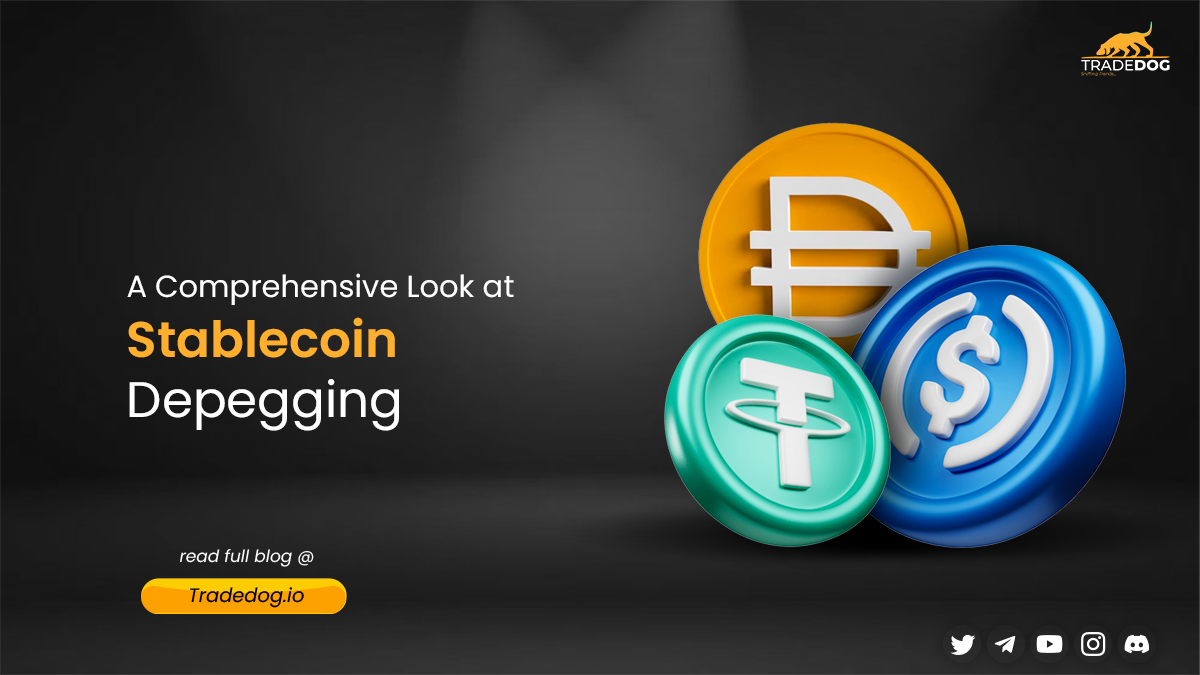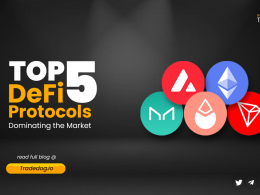Quick Links
Picture this: By the end of 2022, DeFi platforms boasted a total value locked (TVL) exceeding $100 billion, a surge of over 300% from the previous year. In the same timeframe, traditional banks faced stagnant growth, with many grappling with outdated systems and disgruntled customers. The financial world is on the cusp of a revolution, and Decentralized Finance (DeFi) is leading the charge.
Since Bitcoin’s 2009 introduction, blockchain’s potential to redefine the financial sector was apparent. With DeFi’s rise, this transformation seems even more imminent. Offering services parallel to traditional banks but in a decentralized fashion, DeFi questions banking norms.
Lending and Borrowing
Traditional banking has long held the reins in financial services when facilitating lending and borrowing. As intermediaries, banks have historically played a pivotal role in connecting individuals and businesses seeking financial resources with those with surplus funds to lend. However, this conventional system is not without its drawbacks:
- Intermediaries at Play: Banks facilitate lending and borrowing.
- Strict Criteria: Many potential and eligible borrowers are excluded due to rigid requirements.
- Interest Rates: A vast disparity exists; depositors earn minimal interest, while borrowers are charged exorbitantly.
- Inherent Risks: The 2008 financial crisis showcased the fragility of the traditional banking system, where subprime lending and excessive risk-taking led to global economic turmoil.
Decentralized Finance emerges as a transformative powerhouse, reshaping the landscape of lending and borrowing with a paradigm that challenges the conventions of traditional banking. The advancements made by DeFi in the service of lending and borrowing include:
- Peer-to-Peer (P2P): Platforms like Compound and Aave have processed over $10 billion in loans, directly connecting lenders and borrowers.
- Collateral-based Loans: Users secure loans against digital assets, often bypassing credit checks.
- Interest Dynamics: Algorithm-driven interest rates, based on real-time demand and supply, ensure equitable rates for both parties.
Trading and Exchange
Traditional Banking has long been a cornerstone of global trade and exchange, facilitating cross-border transactions and connecting economies. However, this established system is not without its limitations:
- Costs: Transaction fees for currency exchanges and stock trading can be high.
- Delays: Cross-border transaction settlement may take days.
- Limited Access: Many global populations need access to stocks or specific financial instruments.
Decentralized Finance has emerged as a transformative force, reshaping the way trading and exchange occur across the globe. Some of the features which underscore DeFi’s pivotal role in fostering accessible, efficient, and borderless trading and exchange mechanisms include:
- Decentralized Exchanges (DEXs): Platforms like Uniswap have facilitated over $1.6 trillion of volume in trades, decentralizing asset trading.
- Rapid Settlement: Transactions conclude in real-time or in minutes.
- Universal Access: A global user base can access DeFi platforms, democratizing asset trading.
Payments and Remittances
Traditional Banking has historically been a cornerstone of payment systems and remittance networks, providing a conduit for financial transactions across vast distances. However, this well-established framework is not without its drawbacks:
- Middlemen Galore: Cross-border payments often involve several banks.
- Hefty Fees: International transfers come with significant charges.
- Time Constraints: These transfers are notoriously slow.
Decentralized Finance has ushered in a new era of global payments and remittances, marked by groundbreaking features that challenge traditional norms. It disrupts the conventional payment landscape and addresses long-standing challenges, making global payments and remittances seamless, affordable, and exceptionally swift.
- Direct Transactions: Cryptos can be exchanged directly without a middle entity.
- Cost-Efficient: With Ripple and similar platforms, cross-border transfer fees are dramatically reduced.
- Lightning-Fast: Transfers, irrespective of geography, conclude within minutes.
Transparency and Security
Traditional banking has historically underpinned global financial transparency and security through established frameworks. Yet, its reliance on closed systems has shrouded transactions in mystery, hindering accountability.
- Mystery Systems: The lack of transparency in conventional banks is concerning.
- Centralized Threats: Central databases are susceptible to cyber-attacks.
- Fallibility Revealed: The 2008 crisis exposed the dangers of hidden liabilities and over-leveraged institutions in the centralized system.
DeFi has emerged as a global financial transparency and security champion, introducing innovative features like transparent ledgers and distributed security mechanisms. It ensures every transaction is traceable and verifiable on a public ledger. Moreover, its decentralized nature bolsters security, as data is stored across a network of nodes, mitigating single points of failure.
- Transparent Ledgers: Every transaction gets recorded on a public blockchain.
- Distributed Security: The decentralized structure disperses risks. Though DeFi has vulnerabilities, users wield more control over their assets.
Conclusion
Statistics indicate a trend: Decentralized Finance is not just an alternative but potentially superior to traditional banking. By late 2022, the total value locked in DeFi had exceeded $100 billion, underscoring its rapid ascent and adoption. While challenges remain, DeFi’s promise of a democratized, transparent, and efficient financial world is compelling. In the shadow of the 2008 crisis, DeFi presents a compelling alternative to the known pitfalls of traditional systems. The message for traditional banking is clear: evolve with DeFi or risk obsolescence. The future is decentralized.













